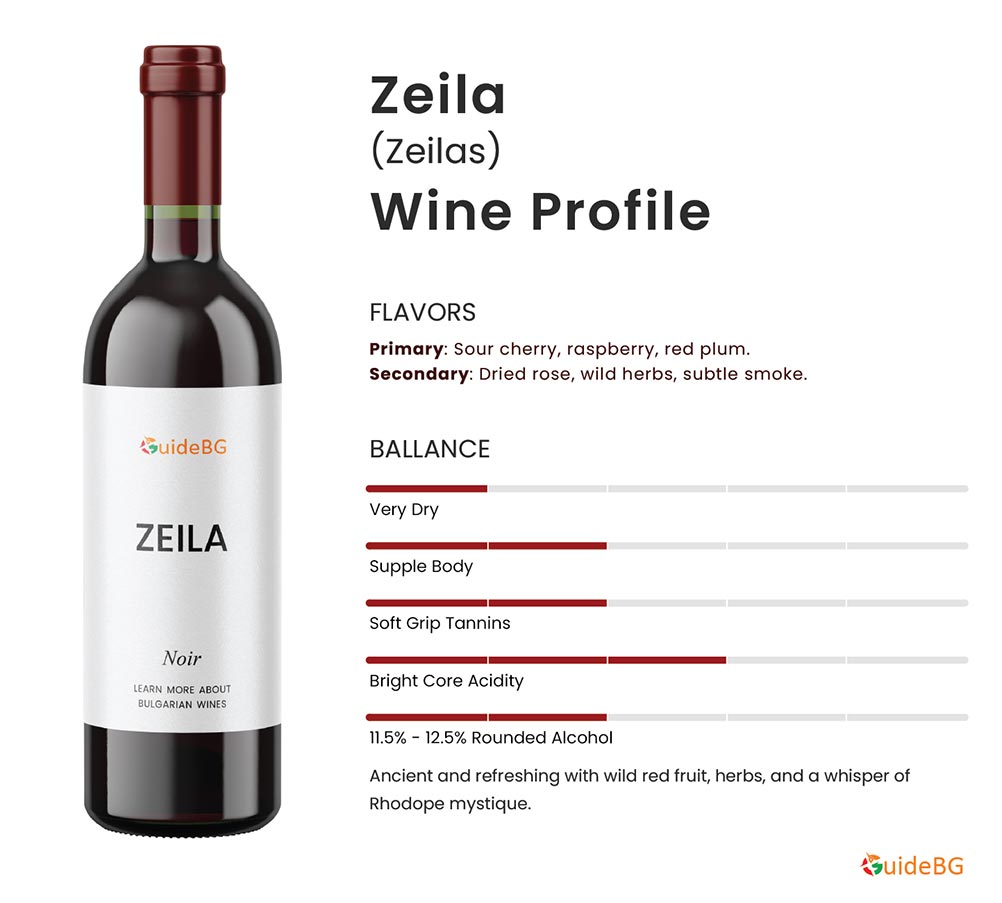Zeila (Зейлас), also recorded under the names Tatul, Zelas, and Zeilas, is a rare and traditional Bulgarian grape variety. It is believed to be autochthonous to the Eastern Rhodope region near the village of Tatul, a site rich in Thracian heritage and mythology. Although scarcely cultivated today, Zeila is a cultural relic of Bulgaria’s ancient viticultural past. It is traditionally grown in mixed vineyards and used in home winemaking for its balance of fruit, acidity, and rustic charm.

Zeila wines are scarce and can be expressive. They are typically light-colored, fresh, and terroir-driven, reflecting the sun-warmed, hilly microclimates of southern Bulgaria. They are often unfiltered or naturally vinified and carry a wild elegance reminiscent of ancient regional styles.
Serving
13-15°C

Standard red

pour gently

Food Pairing
Pairs effortlessly with stuffed peppers, grilled trout, roasted vegetables, or lentil stews. It complements Bulgarian country cooking, such as kachamak, smoked sausages, and even soft sheep cheeses from the Rhodopes.
What to Look For?
Look for a light ruby color, delicate aromas of red forest fruit and meadow herbs, and a fresh, easygoing palate marked by soft tannins and earthy undertones.
Cellaring Potential
Best consumed young, within 1 – 2 years. While not structured for long aging, natural winemakers may explore its evolution over short cellaring.
Blending Partners
It is rarely used in formal blends but may appear alongside Pamid or Sevka in traditional field blends or home winemaking in southern Bulgaria.
Breeding Background & Regional Context
No formal breeding records exist for Zeila. It is considered an autochthonous grape, most commonly associated with the village of Tatul in the Eastern Rhodopes — a region rich in Thracian archaeological sites. Its synonym, Tatul, reflects this geographic and mythological origin.
Alternative Grapes
Try Pamid or Gamza for a light, fruity, rustic red. International comparisons include Frappato or Blauer Portugieser, offering similar soft textures and herbal fruit.


